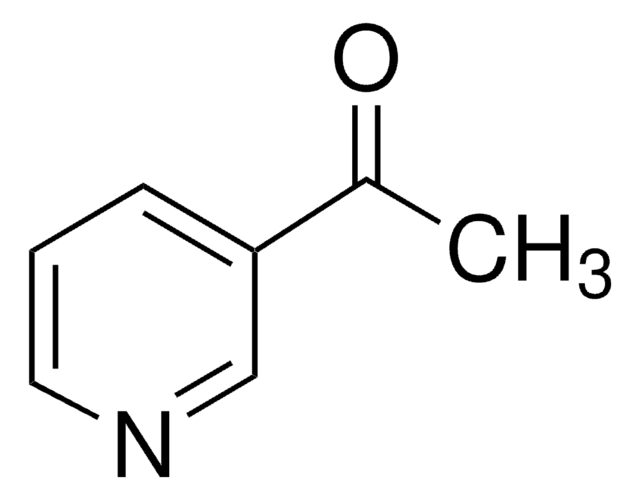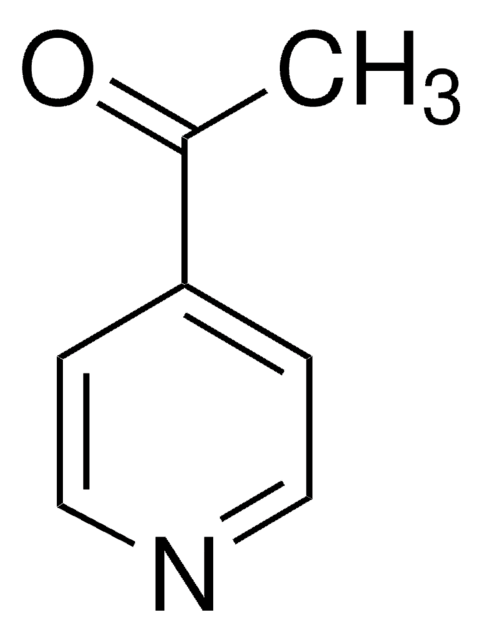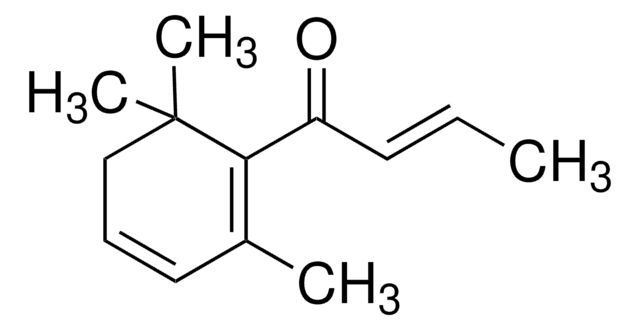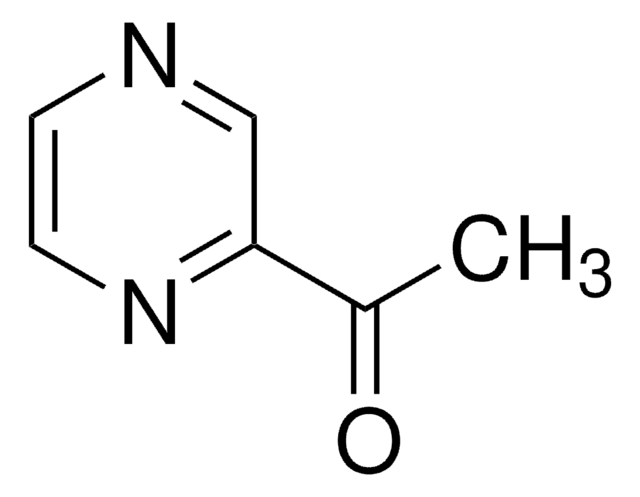W342408
3-Acetylpyridine
≥98%, FG
Synonym(s):
Methyl 3-pyridyl ketone
About This Item
Fragrance grade
Halal
Kosher
Recommended Products
biological source
synthetic
Quality Level
grade
FG
Fragrance grade
Halal
Kosher
Agency
follows IFRA guidelines
meets purity specifications of JECFA
reg. compliance
EU Regulation 1223/2009
EU Regulation 1334/2008 & 178/2002
Assay
≥98%
impurities
≤0.5% Water (Karl Fischer)
refractive index
n20/D 1.534 (lit.)
bp
220 °C (lit.)
mp
11-13 °C (lit.)
density
1.102 g/mL at 25 °C (lit.)
application(s)
flavors and fragrances
Documentation
see Safety & Documentation for available documents
food allergen
no known allergens
fragrance allergen
no known allergens
Organoleptic
nutty; sweet
SMILES string
CC(=O)c1cccnc1
InChI
1S/C7H7NO/c1-6(9)7-3-2-4-8-5-7/h2-5H,1H3
InChI key
WEGYGNROSJDEIW-UHFFFAOYSA-N
Looking for similar products? Visit Product Comparison Guide
Related Categories
Application
- Identification of antioxidant and flavour marker compounds in Kalosi-Enrekang Arabica brewed coffee processed using different postharvest treatment methods.: This study explores the impact of various postharvest processes on the antioxidant properties and flavor profile of Kalosi-Enrekang Arabica coffee, with a focus on 3-acetylpyridine as a key flavor marker. The research aims to enhance coffee quality and consumer satisfaction through optimized processing techniques (Yulianti et al., 2024).
Signal Word
Danger
Hazard Statements
Precautionary Statements
Hazard Classifications
Acute Tox. 3 Oral - Skin Irrit. 2
Storage Class Code
6.1C - Combustible acute toxic Cat.3 / toxic compounds or compounds which causing chronic effects
WGK
WGK 1
Flash Point(F)
219.2 °F - closed cup
Flash Point(C)
104 °C - closed cup
Personal Protective Equipment
Choose from one of the most recent versions:
Already Own This Product?
Find documentation for the products that you have recently purchased in the Document Library.
Customers Also Viewed
Our team of scientists has experience in all areas of research including Life Science, Material Science, Chemical Synthesis, Chromatography, Analytical and many others.
Contact Technical Service









